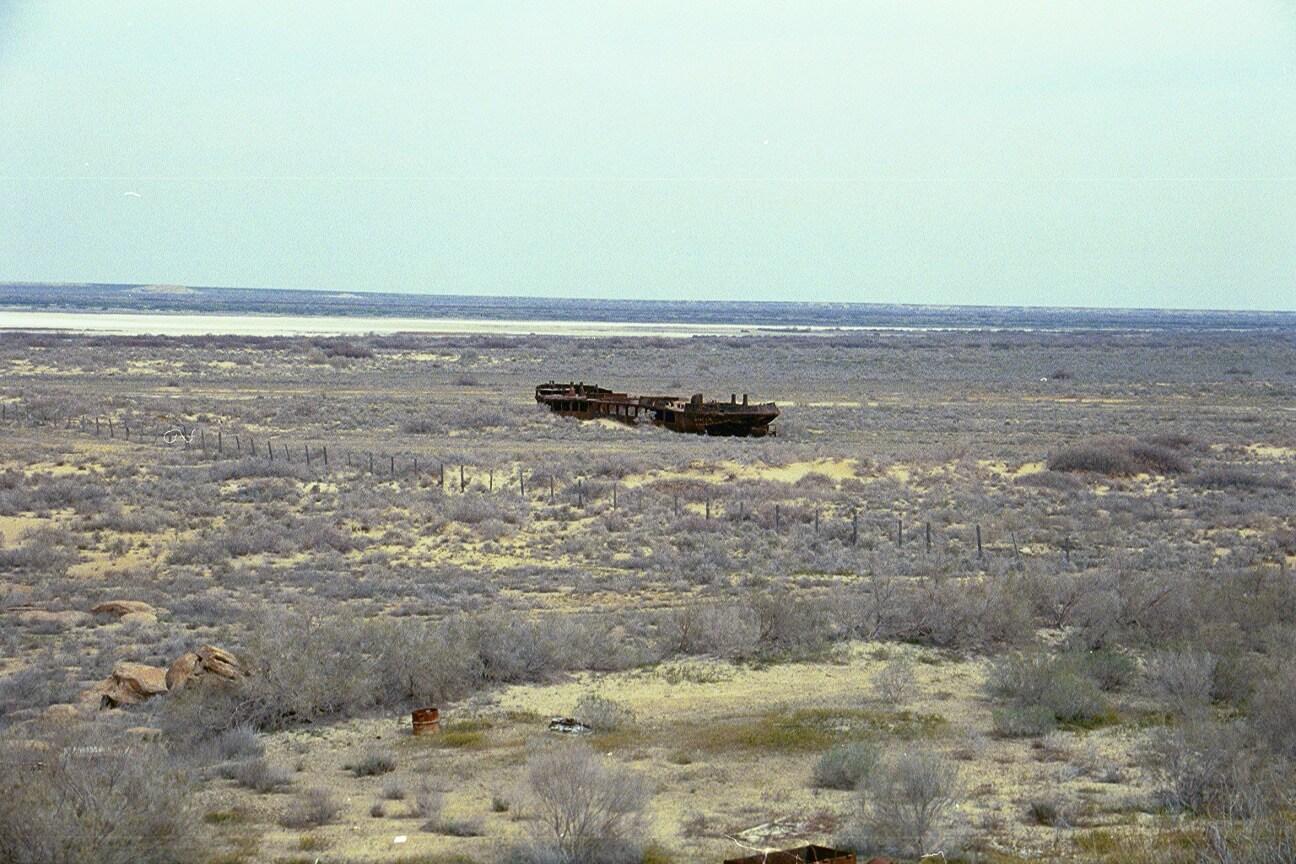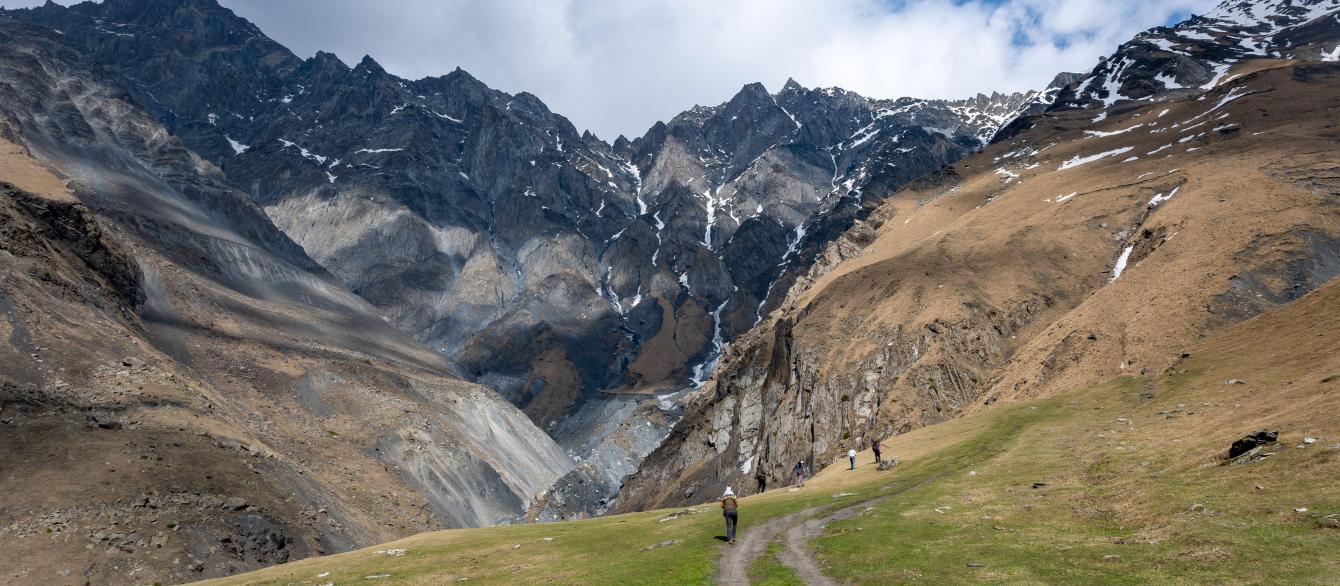The ongoing discussions about Central Asian states' policies for dealing with the spread of COVID-19 provide a good occasion to recall one particular episode—the 1971 smallpox outbreak in Aralsk, a small town on the Kazakh side of the Aral Sea. Back then the Soviet authorities acted promptly and harshly in a state of secrecy, and offered no apologies to the local people for the tragic outcome of the biological weapons program. Today the governments of Kazakhstan, Kyrgyzstan, and Uzbekistan are handling the pandemic in a transparent manner, doing their best to be effective. However, Tajikistan and Turkmenistan have opted for denial and secrecy reminiscent of Soviet times, while not possessing the Soviet prowess in managing crises. —Nargis Kassenova, Senior Fellow, Program on Central Asia
On a fine September day in 1971, the fishermen’s town of Aralsk on the shores of the Aral Sea in Kazakhstan was suddenly put under quarantine. Scores of doctors, epidemiologists, virologists, and disinfection specialists from major Kazakh cities and Moscow, as well as KGB and military officers, descended on Aralsk. Authorities shut down all transportation by sea, rail, and road; only critical personnel and vital goods could enter the town.
The reason for such drastic action was an outbreak of smallpox, a highly infectious disease that leaves its victims with high fever, vomiting, and a skin rash that covers the entire body with painful sores that fill with fluid and last for days. The Aralsk outbreak happened more than thirty years after the Soviet Union officially eradicated smallpox. Where did smallpox come from in a country that had declared victory over it? The real reason behind the mysterious outbreak came to light only decades later. And the answer lay in the secret bioweapons testing facility that the Soviet military ran on Vozrozhdeniye Island in the middle of the Aral Sea.
The real reason behind the mysterious outbreak came to light only decades later. And the answer lay in the secret bioweapons testing facility that the Soviet military ran on Vozrozhdeniye Island in the middle of the Aral Sea.
In dark irony, the name of the island is translated from Russian as rebirth. It is here that the Soviet military tested the most sinister weapons that could cause deadly and painful disease: smallpox, plague, brucellosis, typhus, anthrax, tularemia, Q fever, and Venezuelan equine encephalitis.Gulbarshyn Bozheyeva, Yerlan Kunakbayev, Dastan Yeleukenov, “Former Soviet Biological Facilities in Kazakhstan: Past, Present, and Future,” Center for Nonproliferation Studies, Monterey Institute of International Studies, 1999, p. 6. Smallpox was a key element in the Soviet bioweapons program. In the 1970s, the Soviet Union made arrangements to store twenty tons of smallpox virus in refrigerators at a military facility in the city of Zagorsk in Russia. Had war broken out back then, Soviet heavy bombers and intercontinental ballistic missiles were to carry smallpox agent across the ocean to the United States, exposing millions of Americans to the disease.Jonathan B. Tucker, Scourge: The Once and Future Threat of Smallpox, Grove Press, p. 147.
The Soviet military first began its experiments on Vozrozhdeniye Island with open-air testing of tularemia in 1936. In 1954, the Soviet government built a bioweapons testing facility and brought hundreds of military and scientific personnel to carry out the tests. It chose the island—shared by then-Soviet republics of Kazakhstan and Uzbekistan—due to its relative remoteness from major cities and high temperatures in summer, with the hope that heat would help kill off pathogens and bioagents after the tests.Gulbarshyn Bozheyeva, Yerlan Kunakbayev, Dastan Yeleukenov, “Former Soviet Biological Facilities in Kazakhstan: Past, Present, and Future,” Center for Nonproliferation Studies, Monterey Institute of International Studies, 1999, p. 5.

Equipment at an abandoned facility on Vozrozhdeniye Island.
The 1971 Smallpox Outbreak and ResponseThe description of the outbreak is based on Jonathan B. Tucker, Raymond A. Zilinskas, eds., “The 1971 Smallpox Epidemic in Aralsk, Kazakhstan, and the Soviet Biological Weapons Program,” Center for Nonproliferation Studies, Monterey Institute of International Studies, 2002. The publication provided the first glimpse into an outbreak that was for decades shrouded in secrecy. It is based on a previously secret medical report written by the specialists from Aralomorsk anti-plague station E. Sarynov, B. Kulmakhanov, Z. Makatov, “Report on Measures Taken to Contain and Eradicate the Smallpox Outbreak Locale in the City of Aralsk, September/October 1971,” provided to Monterey Institute of International Studies by Professor Bakhyt Atshabar, at the time the head of the Kazakh Scientific Center of Quarantine and Zoonotic Infections, https://www.nonproliferation.org/wp-content/uploads/2016/10/op9.pdf.
In mid-August of 1971, a 23-year-old marine biologist from Aralsk fell sick with high fever, headache, and muscle pain after returning from a research expedition to the Aral Sea. As part of a scientific team, she collected plankton samples in the open water. When a local doctor paid an initial visit, he did not suspect anything serious. Later she developed a rash on her skin. In fact, she would turn out to be patient zero in the weaponized smallpox outbreak. As the chief sanitary physician of the Soviet Union, General Pyotr Burgasov, would later confirm, she contracted the smallpox that was tested at Vozrozhdeniye Island. Burgasov described the weaponized smallpox as so potent that the woman got infected despite being 15 kilometers away from the island.Andrei Kolobayev, “Otets Bakteriologicheskogo Oruzhiya,” Sovershenno Sekretno, October 26, 2016, in Russian, https://www.sovsekretno.ru/articles/otets-bakteriologicheskogo-oruzhiya/.
When her 9-year-old brother fell ill with high fever and skin rash with lesions that crusted, still nobody suspected smallpox. Only after the boy’s young schoolteacher became gravely ill did doctors diagnose her with smallpox after first mistakenly thinking she had contracted measles. She suffered tremendously. Her numerous lesions left no healthy skin in between them, creating one painful, continuous ulcer. She could not drink or eat. She died from hemorrhagic smallpox. More than four hundred people were exposed—children and teachers at the school where she taught, and medical personnel at the hospital where she stayed.E. Sarynov, B. Kulmakhanov, Z. Makatov, “Report on Measures Taken to Contain and Eradicate the Smallpox Outbreak Locale in the City of Aralsk,” October 18, 1971, pp. 27-28 in Jonathan B. Tucker, Raymond A. Zilinskas, eds., “The 1971 Smallpox Epidemic in Aralsk, Kazakhstan, and the Soviet Biological Weapons Program,” Center for Nonproliferation Studies, Monterey Institute of International Studies, 2002, https://www.nonproliferation.org/wp-content/uploads/2016/10/op9.pdf.
Once it became clear that the town was dealing with an outbreak of smallpox, a massive campaign of containment, quarantine, treatment, and vaccination began. Dozens of medical personnel came from other cities to help.
The authorities set up a hospital for smallpox patients and a field hospital for suspected cases. In the hospital for smallpox patients, all personnel wore anti-plague suits. The doctors did not go home but rather stayed in a dormitory set up for them. To reduce the number of people working in close contact with smallpox patients, medical personnel worked arduous 24-hour shifts, with 24-hour rest periods. In addition, more than a hundred people who came in contact with smallpox patients were isolated in a summer camp facility on the outskirts of Aralsk.Ibid., 31, 34-35.
The disinfection team treated twenty-two locales where smallpox victims or their contacts spent time. They cleaned all surfaces, furniture, laundry, and dishes, and disinfected a total of 1,200 kilograms of “soft objects” in a special disinfection chamber. In addition, more than 900 buildings in Aralsk were disinfected as a precaution. In a special mobile bathhouse, ten people per hour could be washed.Ibid., 45-46.
Doctors ordered the immediate vaccination and re-vaccination of Aralsk’s residents. Within days, more than 40,000 people had been vaccinated against smallpox. The entire town was cordoned off. First police and later soldiers guarded the entire perimeter. Nobody could leave the town, and those who were allowed to enter were vaccinated against smallpox at checkpoints.Ibid., 48-50.
The outbreak was contained within days, and the quarantine was lifted less than a month after it began. The Soviet authoritarian methods worked. Sealing off the entire town and taking drastic countermeasures capped the outbreak and prevented its spread. In total, ten people contracted smallpox and three of them died. In addition to the schoolteacher, smallpox claimed lives of two babies. None of the three had been vaccinated against smallpox.Ibid., 54.
The bioweapons testing facility on Vozrozhdeniye Island continued to operate for decades after the outbreak. In the early 1990s, the Russian military abandoned the island, and years later, the U.S. government worked with Kazakhstan and Uzbekistan to dismantle the weapons facilities.Togzhan Kassenova, “Biological Threat Reduction in Central Asia,” Bulletin of Atomic Scientists, July 18, 2008, https://thebulletin.org/2008/07/biological-threat-reduction-in-central-asia

Former aerosol testing facility at Vozrozhdeniye Island.
Aralsk: Three Decades Later
You cannot reach Aralsk by plane. The train ride to Aralsk from Kazakhstan’s largest city, Almaty, takes more than 30 hours. You arrive at an empty rail station before dawn and have only a few minutes to disembark. It is not a popular stop, and few people get off here. Our group, which includes a film crew from the BBC World Service, has to hurry. We have boxes with heavy camera equipment that we must unload before the train leaves the station.
There are two versions of Aralsk. The first is postcard-worthy—a thriving seaport on the emerald waters of the Aral Sea, with ships and boats coming and going; fishermen catching flounder, carp, and other fish; and locals working steady jobs at fish-processing and ship-repair factories. The multiethnic town has Kazakhs, Russians, Ukrainians, Armenians, and others who call Aralsk home. That was Aralsk before the man-made environmental disaster destroyed the Aral Sea.

A receding Aral Sea turned Vozrozhdeniye Island into a peninsula.
The Aralsk we arrive to is different. After the Soviet government started diverting rivers away to cotton plantations in the 1960s, the sea that used to be the fourth-largest in the world began to shrink. By 1970, there was no water in Aralsk Harbor. Aralsk’s seashore promenade turned into a sandy cemetery for rusting ships. As the sea receded, the remaining water became more and more salty. Fish disappeared. Winds picked up salt from the dried-up sea bottom and spread it across the area. Animals forced to eat vegetation full of salt began getting sick. A herder from a nearby village described how his camels suffered: “Their heads ached, they became dizzy. They would hit their heads against the earth, and eventually die.”“Aral Sea: The sea that dried up in 40 years - BBC News,” BBC (video), 2015, https://www.youtube.com/watch?v=5N-_69cWyKo. Most of the non-Kazakh population left for other republics. Kazakhs stayed. “Where else can we go? We can’t go anywhere,” an old Kazakh woman from Aralsk told a visiting journalist.Ibid.
As far as the eye can see, there is no sea. We walk on what used to be the sea bottom and seashells crunch underneath our feet. Like many small towns and rural settlements in Kazakhstan, Aralsk is struggling. Small grocery stores stock only basic goods. The town consists mostly of one-storey houses, their interiors spartan. The climate is harsh. It is so cold when we visit that tiny icicles appear on the eyelashes of the cameraman when he tries to film outside for more than a few minutes.
We came to Aralsk to film a piece about the 1971 outbreak and interview one of its victims, the brother of patient zero. He is in his 40s when we meet him and still lives in Aralsk with his wife and children. He shares his memories of how events unfolded and describes how his sister got sick, how his illness progressed, and the measures the government took to stop the outbreak. The authorities were able to stop the epidemic, but they never explained to the people of Aralsk what was happening in their town. Nobody ever apologized to them.






